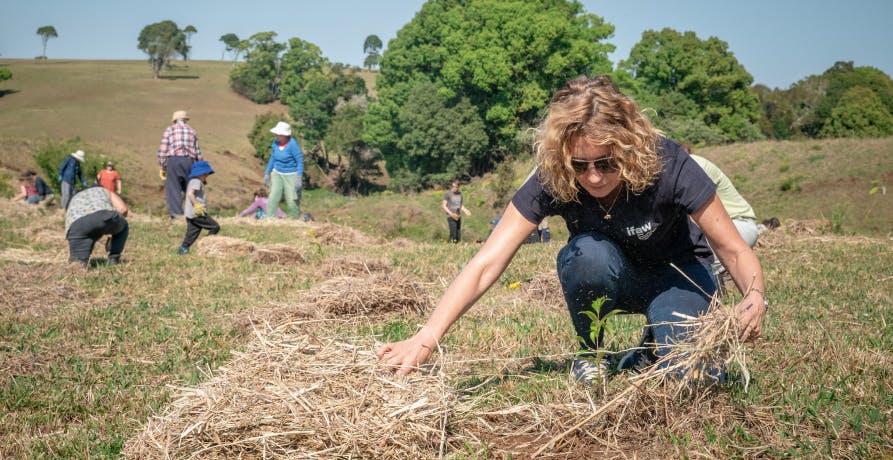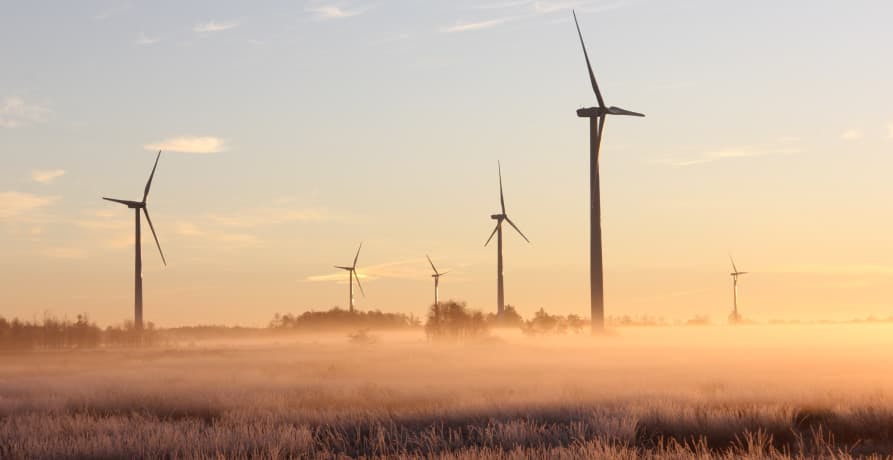What is the Corporate Sustainability Reporting Directive (CSRD)?
What is the corporate sustainability reporting directive, otherwise known as the CSRD? Why is it so important for the financial future of the European Union?
Your request has been taken into account.
An email has just been sent to you with a link to download the resource :)

As awareness of climate change grows, more individuals, businesses, and governments are committing to reducing their carbon footprints. Despite their best efforts, completely eliminating emissions can be challenging. Voluntary carbon markets offer a way for those unable to avoid all emissions to offset the remainder by purchasing carbon credits.
Although demand for these markets has soared recently, there's a rising concern that some companies are using carbon credits as a substitute for taking real action to cut emissions, rather than as a complementary measure. When used in place of genuine reduction efforts, carbon credits risk becoming a tool for greenwashing, giving a misleading impression of environmental responsibility.
👉 This article delves into the workings of voluntary carbon markets, examining their structure, operational mechanics, and the pros and cons they present in the fight against climate change.
Voluntary carbon markets are markets where carbon credits are purchased voluntarily, rather than because an organisation (this might be a company, individual, NGO, or government) needs to comply with emission reduction obligations. They allow carbon emitters to offset their unavoidable emissions via the purchase of carbon credits.
❓What is a carbon credit? In the context of the voluntary carbon market, a carbon credit represents a certificate that corresponds to the removal, reduction, or avoidance of one metric ton of carbon dioxide (or an equivalent amount of other greenhouse gases) from the atmosphere.
The money that goes into the purchase of these carbon credits is then funnelled into climate-action projects that might otherwise not get off the ground. In addition to carbon offsetting, the projects may also benefit things such as biodiversity protection, pollution prevention, public health improvements, employment creation, or the development of green technology.
Organisations can participate in a voluntary carbon market either individually or as part of an industry-wide scheme.
Compliance carbon markets, also known as regulatory carbon markets, are carbon markets that are regulated by national, regional, or international carbon reduction regimes. Examples include the EU Emissions Trading Scheme and the UK ETS.
These markets operate a cap-and-trade system where organisations are given a certain amount of ‘allowances’ (think of this as a permit that allows them to emit greenhouse gases). The cap represents a finite supply of allowance - ie. new ones can’t be created. However, organisations can sell and buy credits. This incentivises organisations to cut down on their emissions because if they don't, they risk having to purchase surplus carbon credits.
Voluntary carbon markets, on the other hand, are completely discretionary. Organisations purchase carbon credits because they want to, not because they have to. Many companies participate in it for example because they want to contribute to the climate change fight, or perhaps more cynically, because they think it's a good PR move.
Unlike the compliance carbon market, the voluntary carbon market uses a project-based system in which there is no finite supply of allowances. More voluntary carbon credits can be created through the development of additional projects that help to avoid, reduce, or remove carbon emissions.
The pricing of carbon credits under a voluntary carbon market is a bit more complex than that of the compliance carbon market credits. This is because the types of projects funded by the credits vary hugely. Generally speaking, the following factors are considered when determining the price of a credit:
As it stands there’s no centralised voluntary carbon market and so project developers can sell their credits directly to buyers, through a broker, or via a retail trader. While most carbon credit transactions take place directly there are some exchanges that are starting to emerge, these aim to simplify and speed up the rate of carbon credit trading.

To ensure that the credits meet a minimum standard, they must first be verified by an independent third party. This third party will consider the following factors when awarding a standards certification:
The whole point of the voluntary carbon market is to provide an investment mechanism for the offsetting of unavoidable carbon emissions. Carbon credits fund carbon offsetting projects (though there may very well be other benefits to the project too). These projects will fall under either carbon avoidance and reduction or carbon removal or sequestration. Let’s explore what these terms mean in a bit more detail below:

Voluntary carbon markets support a wide variety of emission reduction projects. However, the aim is always to reduce or remove greenhouse gas emissions (GHG emissions). These projects can be anything from small local initiatives to large-scale industrial projects.
Common examples of projects are reforestation projects, wetland management programs, carbon capture and storage, the development of renewable energy projects and green technology, regenerative agriculture programs… the list goes on.
More often than not these projects also drive additional benefits - something that's known as ‘co-benefits'. Co-benefits of the different projects can vary hugely and include things like improving water quality, preventing deforestation, and creating local jobs and businesses. Project developers may design the project in such a way that the co-benefits align with the United Nations Sustainable Development Goals (SDGs), which can in turn increase the overall value of a credit.
❗️ No matter what type of project is created, they all have one requirement: this is that the project, removal, or reduction of emissions would not have otherwise occurred.
Voluntary carbon offset markets are often promoted as a solution to dealing with unavoidable carbon emissions. One of their main benefits is that they’re complimentary, meaning that they don’t detract or take away from the compliance carbon markets, they complement them by providing an opportunity for projects that wouldn’t otherwise be feasible. It also allows organisations to go further than they’re legally required to.
Another notable benefit of voluntary carbon offset markets is that they promote innovation. Compliance carbon markets (ie. those that are required by law) are often strictly regulated and subject to stringent bureaucratic constraints. Whereas voluntary carbon markets have a lot more freedom in this regard, this means that project developers have the freedom to be more innovative. For example, they may be able to implement a project that would be considered too small or not viable for the compliance carbon market. This can result in innovations that may help to lower the cost of emerging green technologies.
What’s more is that not everyone is subject to the compliance carbon market requirements and so the voluntary carbon market allows organisations (and individuals) to gain experience with carbon markets and their inventories, reductions, storage, etc.
👉 When used alongside genuine efforts to reduce carbon footprints, voluntary carbon credits can be an effective tool in achieving emission reduction targets.

Despite the clear benefits that the voluntary market brings it’s not without problems and its critics argue that it is fragmented and complex and that credits do not always accurately represent emissions reductions. Limited pricing data also makes it very different for carbon credit buyers to know if they’re paying a fair price.
Common criticisms of the voluntary carbon market include:
The voluntary carbon market has the potential to help us transition to a decarbonised global economy through the redirection of investment into renewable energy and energy efficiency. Not only this, but it can also help us to scale up the removal of carbon dioxide emissions in an effort to offset unavoidable emissions and reach net zero. However, if it’s going to realise its full potential the voluntary carbon market is going to have to address the challenges it faces.
What is needed to overcome these challenges?
Voluntary carbon markets could play a crucial role in the transition to net zero by supporting decarbonisation that goes beyond simply reducing individual emissions. By purchasing carbon credits carbon emitters can compensate for their unavoidable emissions. But to realise this potential, significant effort is needed to iron out challenges and scale up the market.

At Greenly we can help you to assess your company’s carbon footprint, and then give you the tools you need to cut down on emissions. Why not request a free demo with one of our experts - no obligation or commitment required.
If reading this article has inspired you to consider your company’s own carbon footprint, Greenly can help. Learn more about Greenly’s carbon management platform here.


We share green news once a month (or more if we find interesting things to tell you)